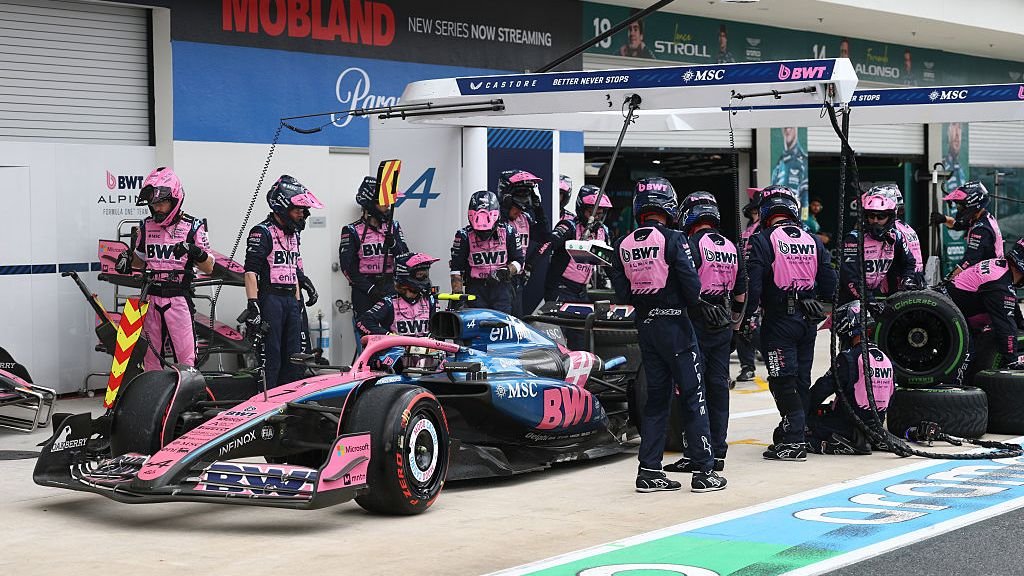The initiation of a Formula 1 driver’s career is often viewed as a remarkable milestone, filled with enthusiasm and the promise of a long journey ahead. However, for Jack Doohan, his debut was shadowed by uncertainty even before he embarked on his first race in Abu Dhabi at the close of the previous season. The narrative surrounding his future was already being scrutinized, as the team he represented, Alpine, found itself in a precarious position regarding its driver lineup.
The interest in Franco Colapinto had surged, especially considering Alpine’s impending transition from its power unit program to becoming a customer team. With Flavio Briatore, the team’s executive advisor, known for making decisive and sometimes harsh choices, the potential for a driver with impressive skills and substantial financial backing from South America made Colapinto an appealing option. This development raised questions about Doohan’s future, despite assurances that his initial race was not merely a trial period.
As the off-season progressed, the pressure on Doohan intensified. Colapinto was officially signed as a reserve driver, effectively on loan from Williams, further complicating Doohan’s standing within the team. Williams’ team principal, James Vowles, hinted at Colapinto’s expected future with Alpine, emphasizing that the young driver’s best chance of racing success lay with the team. Vowles’ comments indicated his desire to see Colapinto back in the Williams car, suggesting a predetermined timeline for when that transition might occur.
Colapinto’s potential was evident as he wrapped up the previous season, despite facing challenges typical of a rookie driver, including a series of crashes. His mid-season debut had been challenging, but the opportunity to race with Alpine could provide him with valuable experience, smoothing out any rough edges in his performance. Briatore’s reputation for making decisive moves in the interest of the team only added to the perception that Colapinto was a strategic acquisition for Alpine.
The shockwave this week was not merely about Doohan’s demotion after just six races—a decision that many deemed harsh, especially given the circumstances surrounding Colapinto—but also about the unexpected resignation of team principal Oliver Oakes. Speculation regarding Doohan’s future had circulated since the Abu Dhabi race, but as the Miami race approached, the chatter quieted. However, it soon reignited with the announcement that Colapinto would fill the race seat for at least the next five races.
What caught many off guard was Oakes’ departure, as he had been a vocal supporter of Doohan. Even while acknowledging the competitive nature of the sport, he consistently defended Doohan’s position, emphasizing the need for drivers to deliver results on the track. Oakes had expressed empathy towards Doohan, recognizing the media frenzy surrounding the young driver’s performance while encouraging him to focus on his race craft.
Doohan’s final outing in Miami was a tumultuous one. The timing of his release from the garage during Sprint qualifying was unfortunate, leading to his elimination from SQ1. Despite expressing his frustration over team radio, he managed to outqualify his teammate, Pierre Gasly, for the first time, showcasing his potential. However, misfortune struck during the race when he suffered a puncture after being caught up in first-corner contact, an incident beyond his control.
It’s important to note that Doohan had encountered previous setbacks, including costly crashes in Australia and Japan. The latter incident, attributed to a driver error involving the DRS system, had drawn criticism from the team. Nevertheless, he had demonstrated glimpses of his capabilities and, six races into the season, he was not significantly lagging behind Gasly in performance.
If Oakes’ resignation was indeed linked to the decision regarding the driver lineup, it would come as a surprise. His statements had often hinted at the likelihood of Colapinto being promoted, and Oakes, as a Briatore appointee, understood the dynamics of the team’s leadership structure. The signs pointing toward Colapinto’s eventual race seat had been clear since Doohan first took to the track in Abu Dhabi.
The team’s history of frequent changes in leadership has been a point of concern, as they seek stability amid their ongoing challenges. With Oakes’ exit, the team is set to welcome Briatore back into a more prominent role, taking over the responsibilities previously held by Oakes. Despite the upheaval, Briatore claims a positive relationship with Oakes, asserting that the resignation was not due to any discord.
Whether the true reasons behind these changes will be revealed remains uncertain. However, it is evident that Alpine is experiencing a tumultuous period, struggling to maintain a consistent trajectory. In Formula 1, where car performance is often elusive, Alpine’s ongoing instability is a significant concern.
As the team navigates through this challenging phase, the focus will be on how Colapinto performs in the race seat and whether Doohan can rebound from this setback. The dynamics within the team will be critical as they strive for success in a highly competitive environment. The coming races will undoubtedly be pivotal, not only for the drivers involved but for the future direction of Alpine in the world of Formula 1.
